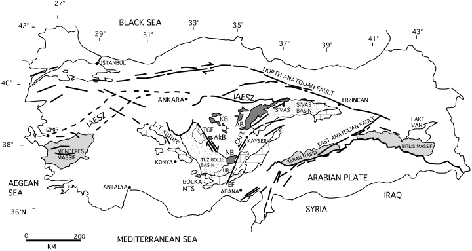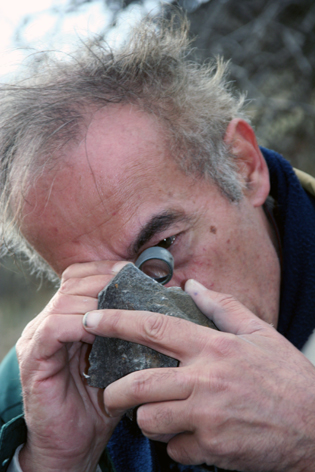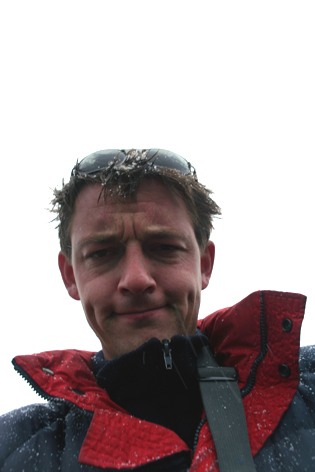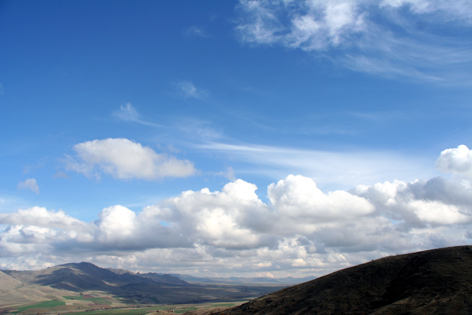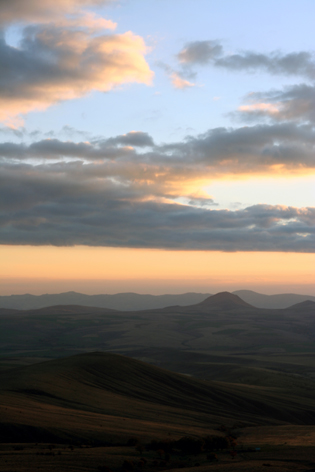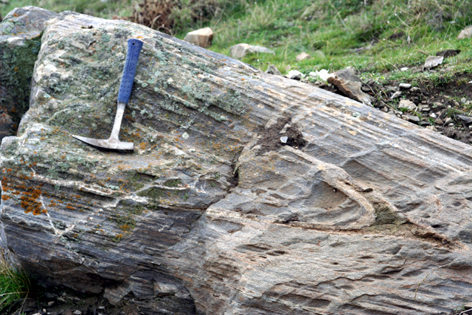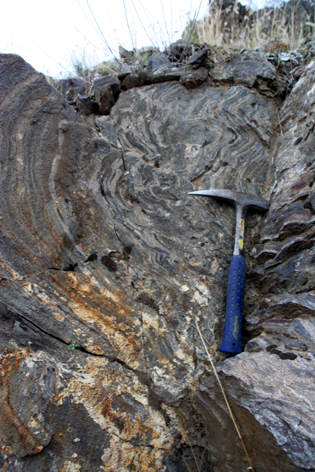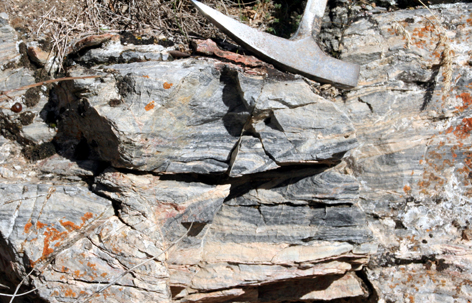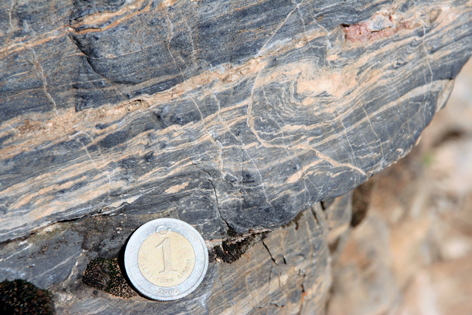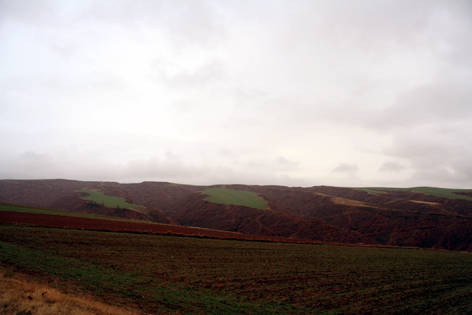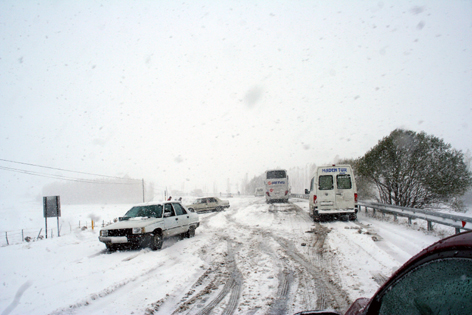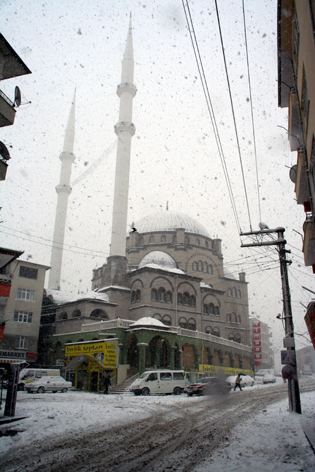|
(Turkey)
PHD POSITION VACANT!! A PhD project is available from August 2007 onwards at the Structural Geology and Tectonics group at Utrecht University: 'Tectono-metamorphic evolution, timing and mechanism of Cenozoic exhumation of the Central Anatolian Crystalline Complex, central Turkey'. It concerns a fully funded 4 year PhD project in a multidisciplinary context of integrated research in Turkey. You can find a short description of the project below. Candidates can send their cv, a short description of their research experience and interest, and the names and email addresses of two referees, to Prof. Reinoud Vissers (rvissers@geo.uu.nl) and/or Dr. Douwe van Hinsbergen (hins@geo.uu.nl). The application deadline closes at June 26. Description of the project: The Alpine-Himalayan orogen essentially formed in response to northward subduction of the Neotethyan Ocean along the southern margin of Eurasia during Late Mesozoic - Cenozoic convergence. In the eastern Mediterranean part of the orogen there is widespread evidence for mostly Neogene collapse of this mountainbelt as a result of roll-back and slab break-off. Widespread extension, however, has also affected the orogen as early as the late Cretaceous, leading to e.g. the opening of the Black Sea generally interpreted as a back-arc basin. The Central Anatolian Crystalline Complex (CACC) shows late Cretaceous regional high-temperature metamorphism and widespread felsic intrusion before pre-Lutetian exhumation, suggesting that exhumation of the CACC and the opening of the Black Sea were associated with an orogen-scale process involving an abnormally hot mantle. The proposed project aims to add not only to the recognition of this geodynamic processes in Anatolia and the Black Sea, but to a general and largely unrecognised problem of orogenic collapse well before ocean closure. An earlier exploration indicated that the exposure and lithology is very well suitable to document the document the structural and metamorphic history of the CACC. The proposed field-based project is focussed on three main aspects of the CACC as follows. (1) The PTt evolution of the crystalline rocks of the CACC will be studied to place the metamorphism with estimated climax conditions of 6-7 kbar and 750=B0C, and the subsequent intrusion by syentic-monzonitic and/or granodioritic plutons, in the context of a tectono-metamorphic evolution of the CACC. A field- and microscale structural study allied with thermobarometry and chemical Monazite U-Th-Pb age dating is proposed to reveal details of this evolution with time. (2) A prime aim of the project is to test whether the CACC was exhumed along one or more extensional detachments and if so, to determine rate and direction of exhumation and the large-scale extensional geometry. (3) Post-Eocene deformation, evidenced by thrusts and folds affecting the Eocene and younger sediments overlying the CACC, will be studied to estimate in how far the CACC was a coherent large-scale continental block during the early Tertiary, or since when the CACC obtained its present-day geometry. To this end a strong interaction is envisaged with current paleomagnetic studies within the Dutch Integrated School of Solid Earth Sciences (ISES) context, to reveal since when the CACC became a more or less coherent continental fragment. Field photographs! In November 2006, an excursion into the Central Anatolian Crystalline Complex was carried out by Prof. Reinoud Vissers and me, in cooperation with Nuretdin Kaymakci and Pinar Ertepinar. Aim of this excursion was to test the suitability of a PhD project, which if granted will start in the summer of 2007 within the context of the Netherlands Research School of Integrated Solid Earth Sciences (ISES) at the Structural Geology and Tectonics group of Utrecht University. If granted, this project will be internationally advertised. This page shows a field impression of this beautiful and geologically spectacular region. Aim of this project will be to reconstruct the structural and metamorphic history of the Central Anatolian Crystalline Complex. This complex exposes high-grade crystalline basement, characterised by a severe HT-LP metamorphic overprint, that was burried in the course of the Cretaceous, and exhumed in the late Cretaceous and Paleogene. The present-day boundaries of the complex are Tertiary thrusts and strike-slipfaults. Special focus of this project will include four issues: 1) the P-T-t path of the region, especially to determine pre-high temperature peak metamorphic conditions if possible; 2) the prograde deformation history; 3) the exhumation history (erosion versus extension) and 4) the post-exhumation (compressional) deformation history. Key study areas include the Kirsehir, the Akdag and probably also the Nigde blocks. Cooperation will be possible with paleomagnetic and stratigraphic specialists.
These maps show the position of the Central Anatolian Crystalline Complex in Turkey, and the position of the key areas: the Kirsehir, Akdag and Nigde Blocks (images from Whitney et al, 2001).
Principal supervisor of the proposed project will be Prof. Dr. Reinoud Vissers here enjoying a migmatite :)
I'm afraid that the candidate will also have to cope with me...
And cooperation will exist with geologists from the Middle East Technical University of Ankara (on the picture, Nuretdin Kaymakci and Pinar Ertepinar)
The region is extremely scenic, as the following pictures will show...here the Kirsehir massif block in the NW.
To the south of the Kirsehir block...
View to the south from Kirsehir block
North-dipping foliation in marbles in the northern part of the Kirsehir-block
Granitoid bodies appear as blocky hills in the landscape, here intruded into a schist-marble sequence
No further comments...
A variety of rock types characterises the basement and its Eocene and younger sedimentary cover. Here aplitic dykes in one of the granites.
The metamorphic basement is tightly folded, with at least two folding phases: an older isoclinal fold (centre bottom) is refolded by asymmetric folds
The basement contains many folded migmatites
Another example of the folded migmatites...
And folded marbles...
...and some more marble
The basement is covered by Eocene shallow marine limestones and Oligocene continental redbeds (on this picture)...
Which can be spectacularly folded...here the Eocene limestones in a vertical to slightly overturned position. To the right you see the left-dipping Oligocene redbeds.
Spectecular compressional deformation of the sedimentary cover...
Brittle faults in the basement marbles...
...and then fieldwork started to be difficult...early snow struck us...
...and some more
Some more even...
And we hope next time the Akdag massif will be slighly better exposed |

 Central
Anatolia 2006
Central
Anatolia 2006